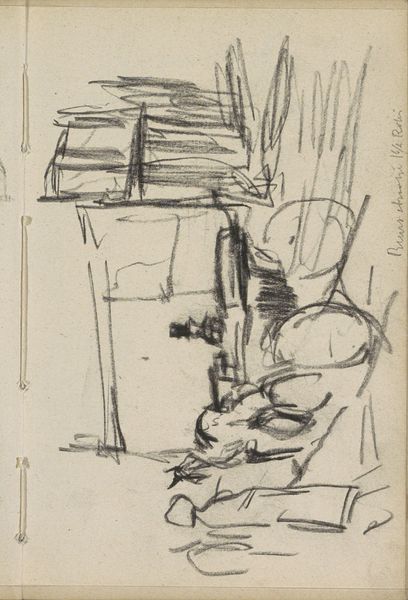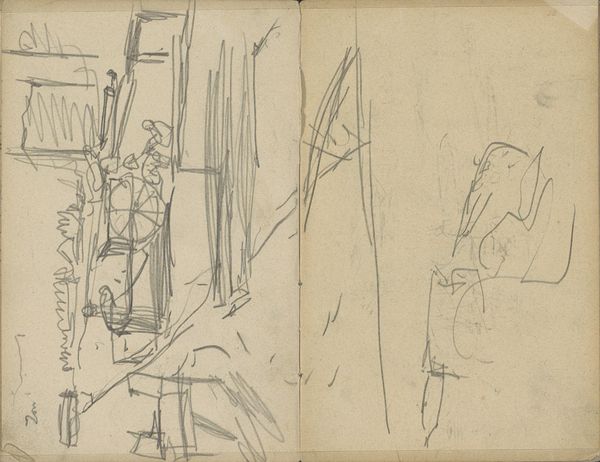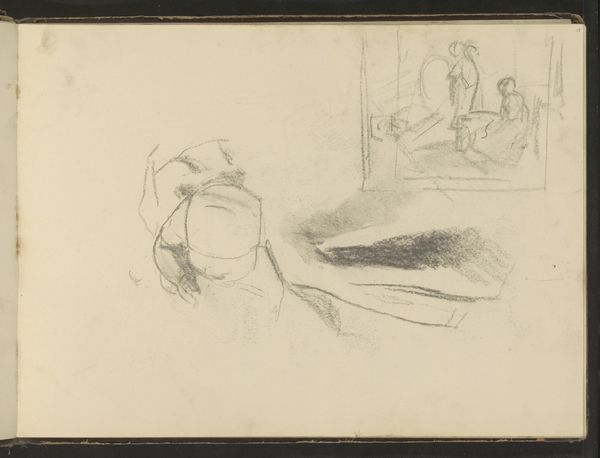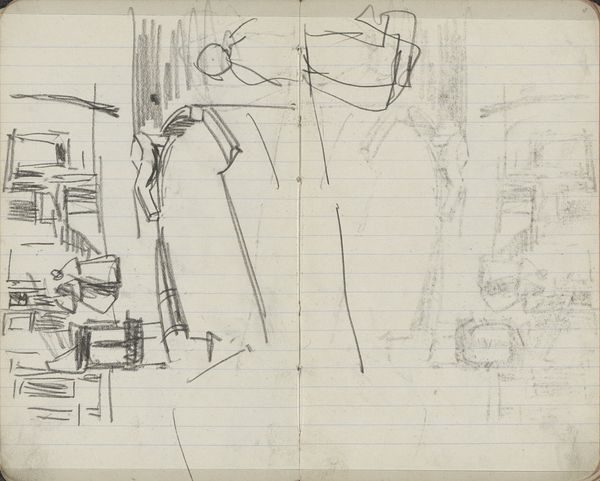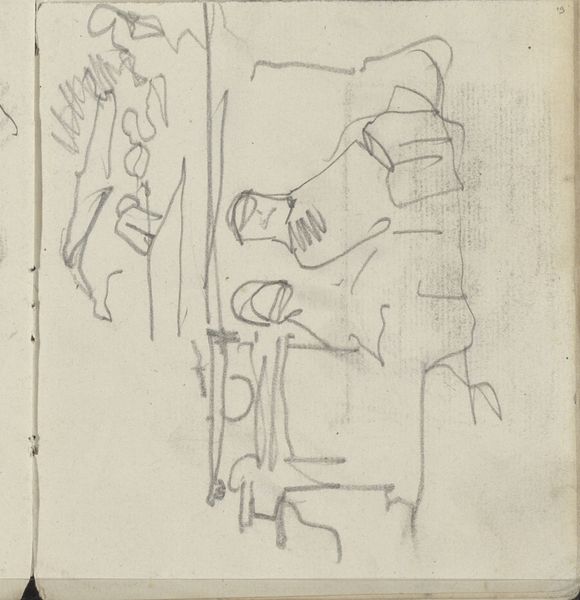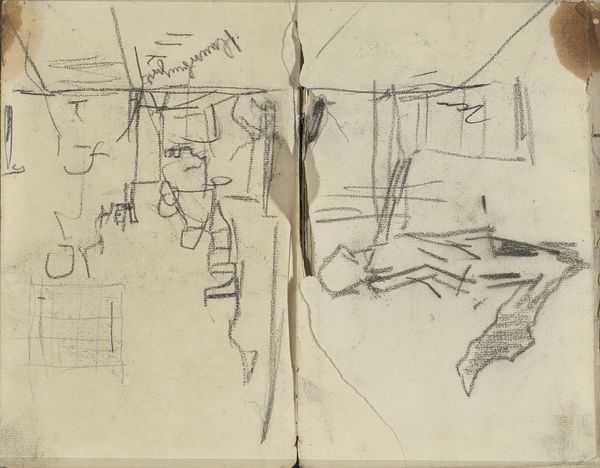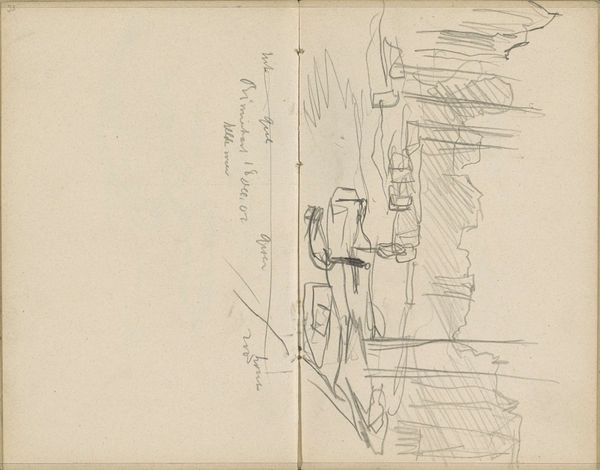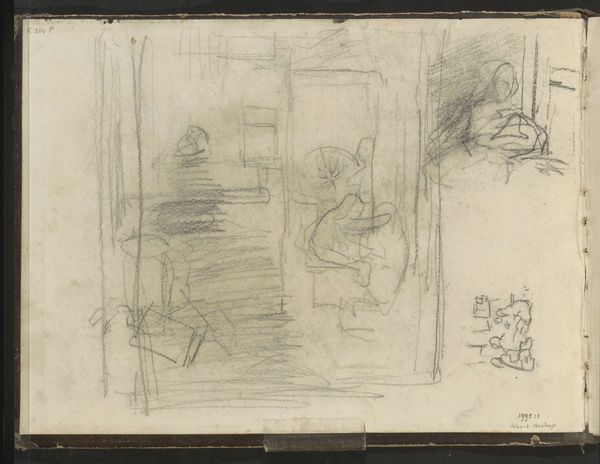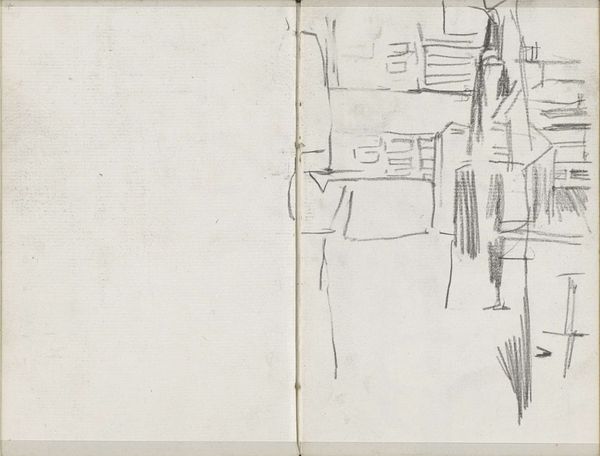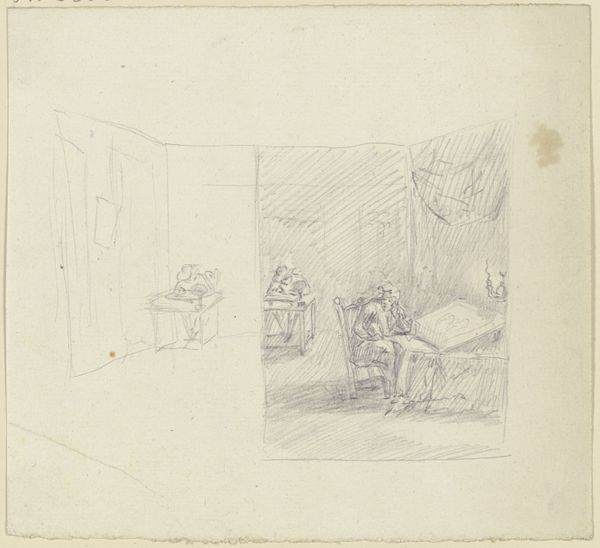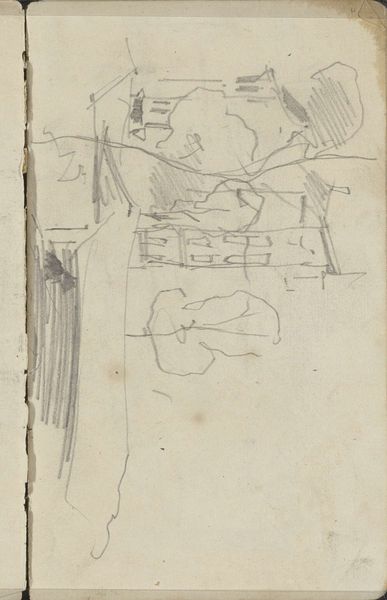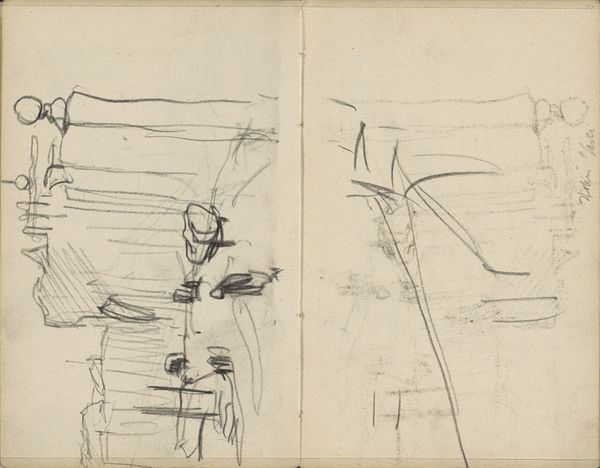
Twee vrouwen op het Singel ter hoogte van de Heisteeg 1886 - 1908
0:00
0:00
Copyright: Rijks Museum: Open Domain
Curator: Welcome. We're looking at "Twee vrouwen op het Singel ter hoogte van de Heisteeg," a sketch attributed to George Hendrik Breitner, dating between 1886 and 1908. It’s currently held in the Rijksmuseum collection. Editor: My first impression is one of transience. It's ephemeral; a fleeting moment captured in hurried lines. I immediately wonder about these women. Curator: Indeed. The rapid strokes of pencil suggest immediacy. The composition, despite its sketch-like quality, effectively conveys spatial relationships. Observe the overlapping figures and structures that imply depth within the urban landscape. Editor: For me, those hurried lines evoke the hurried lives of women in Amsterdam at that time, likely working-class women. The Singel, then and now, was a bustling area, but the quick sketch diminishes their individual importance. Curator: That reading aligns with Breitner’s broader artistic interests. He was known for capturing the everyday realities of urban life in Amsterdam, and he used techniques from Impressionism, such as quick brushstrokes, and photographic viewpoints. However, this particular work lacks a clear subject. Its structural essence and aesthetic decisions hold greater weight here. Editor: But consider what is deemed aesthetically worthy and what is not! Breitner focuses here on two women whose bodies are largely unformed. We do not know their stories or struggles. Isn't it essential that we focus our gaze on these very elisions? Curator: While context always provides useful grounding, overemphasizing narratives outside the piece can obscure its intrinsic artistic qualities, in my opinion. What we do see is an economy of line. See how, with minimal strokes, Breitner suggests form and movement. That alone constitutes his achievement here. Editor: But how can we ignore the historical implications of *who* he chose to portray? His sketch of these women reflects societal biases present during this period. These were marginalized individuals then, rendered further invisible in the canon now. Curator: Fair enough. Perhaps it's in recognizing both, the artistic gesture and social commentary, that we achieve the richest interpretation. Editor: Perhaps acknowledging that uneasy balance brings into focus not just the art, but its complicated legacy and continuing power to affect those who see it.
Comments
No comments
Be the first to comment and join the conversation on the ultimate creative platform.
